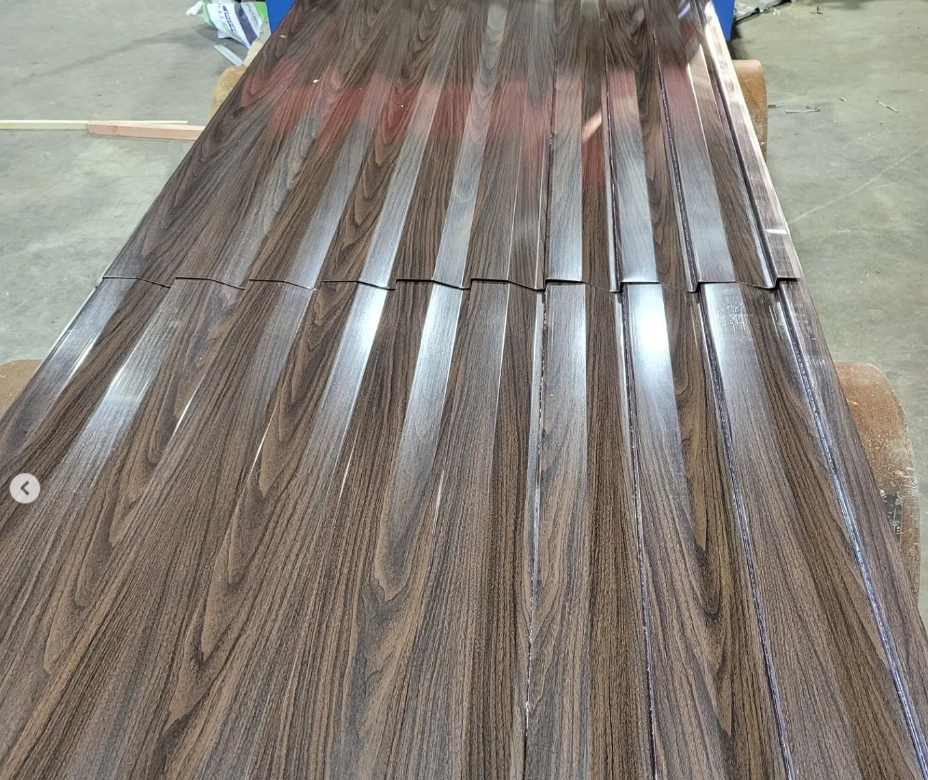automatic steel sheet slitting line
Understanding Automatic Steel Sheet Slitting Lines
In the competitive world of manufacturing, efficiency and precision are paramount. Among the technologies that have transformed the processing of metal, automatic steel sheet slitting lines stand out as a vital innovation for industries that require high-quality metal products. These advanced lines play a crucial role in the steel production and processing sector, offering a streamlined method for cutting large sheets of steel into narrower strips tailored for various applications.
What is a Steel Sheet Slitting Line?
A steel sheet slitting line is an automated system designed to cut wide rolls of steel (coils) into multiple narrower strips. The process involves feeding a coil of steel into the slitting line, where it is unwound, cut, and recoiled into smaller, manageable strips. This methodology facilitates the efficient use of materials, reduces waste, and enables the production of specific widths needed for customer requirements.
Components of a Slitting Line
An automatic steel sheet slitting line consists of several critical components that work in tandem
1. Uncoiler The process begins with the uncoiler, which holds the large coil of steel and feeds it into the slitting line. It is equipped with a hydraulic system to manage the weight of the coils and ensure consistent tension throughout the process.
2. Slitting Head The heart of the operation, the slitting head comprises multiple razor-sharp blades that cut the metal sheet into the desired widths. These blades can be adjusted to produce various strip sizes, making the slitting line versatile for different manufacturing needs.
3. Guiding System To ensure precision, a guiding system directs the steel sheet into the slitting head, maintaining the correct alignment. This system helps prevent any misalignment that could lead to defects in the final product.
4. Recoiler After the slitting operation, the narrower strips are wound onto another coil by the recoiler. This component also utilizes hydraulic systems to maintain tension and ensure a tight, neat wound strip.
automatic steel sheet slitting line

5. Control System Modern slitting lines are equipped with sophisticated control systems that allow operators to monitor and adjust the settings in real-time. This includes controlling the speed of the operation, the tension applied to the steel, and the positioning of the cutting blades.
Advantages of Automatic Slitting Lines
The automation of steel sheet slitting lines presents numerous advantages for manufacturers
- Increased Efficiency Automatic slitting lines operate at higher speeds compared to manual methods. This efficiency means that manufacturers can produce more strips in less time, significantly improving output.
- Consistency and Precision Automated systems minimize human error, ensuring that each cut is precise and consistent, which is crucial for quality control in metal products.
- Reduced Labor Costs By automating the process, companies can reduce the workforce needed for steel processing tasks, leading to lower labor costs and allowing skilled workers to focus on more complex tasks.
- Flexibility Modern slitting lines can easily adapt to different product requirements, enabling manufacturers to switch between various strip widths without extensive downtime.
- Enhanced Safety Automation reduces the risk of workplace accidents associated with manual cutting processes, contributing to a safer working environment.
Conclusion
In summary, automatic steel sheet slitting lines represent a significant leap forward in metal processing technology. By combining cutting-edge engineering with automation, these systems provide manufacturers with the tools necessary to enhance productivity, maintain quality, and adapt to the evolving demands of the market. As industries continue to seek efficiencies and innovations, the role of slitting lines will undoubtedly remain critical in shaping the future of metal processing. Whether for automotive applications, construction materials, or consumer goods, the impact of precise and efficient steel processing continues to be felt across various sectors.
-
Roof Panel Machines: Buying Guide, Types, and PricingNewsJul.04, 2025
-
Purlin Machines: Types, Features, and Pricing GuideNewsJul.04, 2025
-
Metal Embossing Machines: Types, Applications, and Buying GuideNewsJul.04, 2025
-
Gutter Machines: Features, Types, and Cost BreakdownNewsJul.04, 2025
-
Cut to Length Line: Overview, Equipment, and Buying GuideNewsJul.04, 2025
-
Auto Stacker: Features, Applications, and Cost BreakdownNewsJul.04, 2025
-
Top Drywall Profile Machine Models for SaleNewsJun.05, 2025








